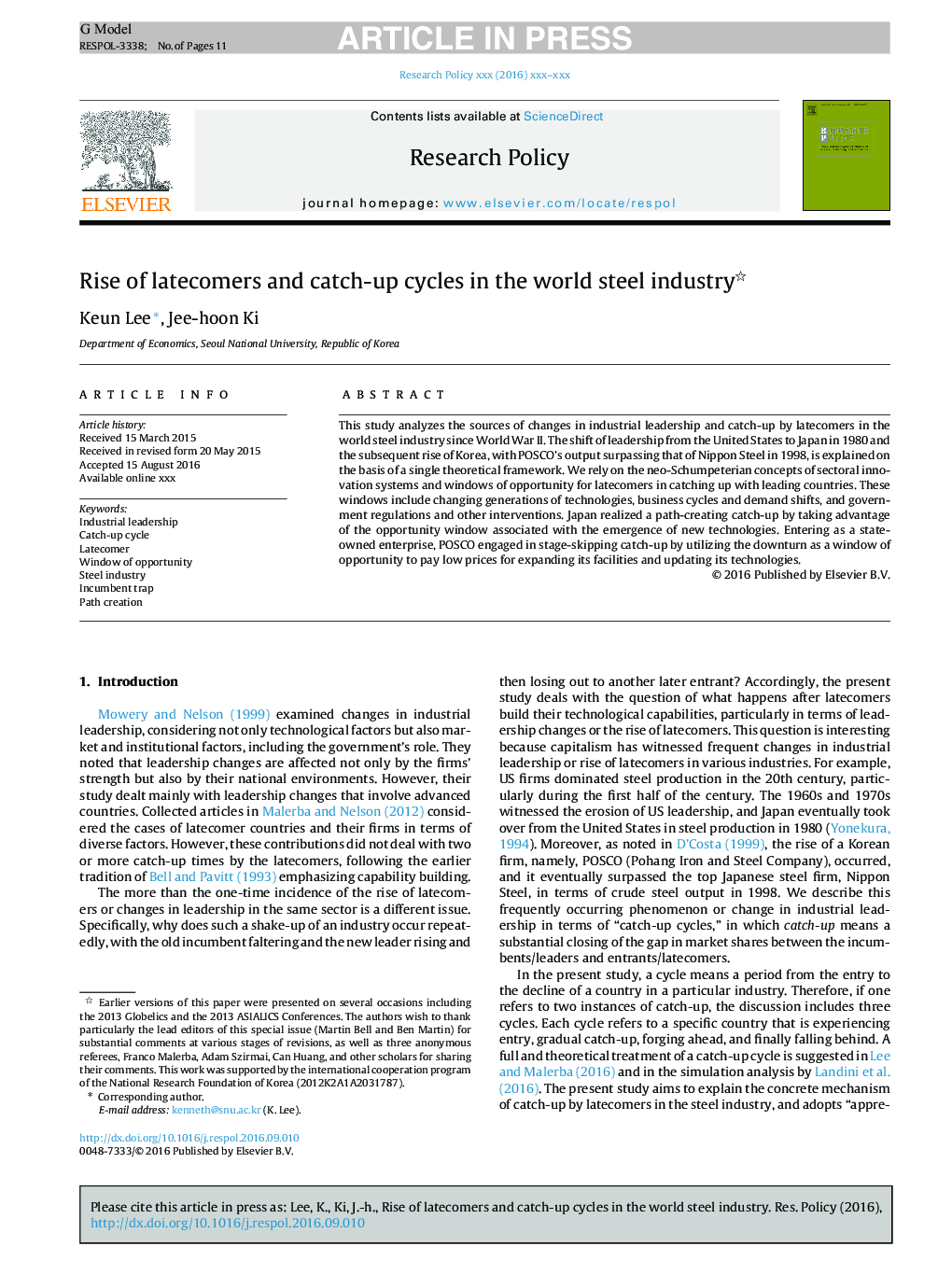| Article ID | Journal | Published Year | Pages | File Type |
|---|---|---|---|---|
| 5104029 | Research Policy | 2017 | 11 Pages |
Abstract
This study analyzes the sources of changes in industrial leadership and catch-up by latecomers in the world steel industry since World War II. The shift of leadership from the United States to Japan in 1980 and the subsequent rise of Korea, with POSCO's output surpassing that of Nippon Steel in 1998, is explained on the basis of a single theoretical framework. We rely on the neo-Schumpeterian concepts of sectoral innovation systems and windows of opportunity for latecomers in catching up with leading countries. These windows include changing generations of technologies, business cycles and demand shifts, and government regulations and other interventions. Japan realized a path-creating catch-up by taking advantage of the opportunity window associated with the emergence of new technologies. Entering as a state-owned enterprise, POSCO engaged in stage-skipping catch-up by utilizing the downturn as a window of opportunity to pay low prices for expanding its facilities and updating its technologies.
Related Topics
Social Sciences and Humanities
Business, Management and Accounting
Business and International Management
Authors
Keun Lee, Jee-hoon Ki,
